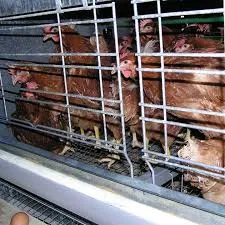Innovative Extrusion Technology for Enhanced Fish Feed Production and Quality Improvement Solutions
Aug . 01, 2024 04:49 Back to list
Innovative Extrusion Technology for Enhanced Fish Feed Production and Quality Improvement Solutions
Understanding Fish Feed Extruder Machines A Key to Sustainable Aquaculture
Aquaculture has emerged as a vital sector in the global food industry, meeting the increasing demand for fish and seafood. As the industry's growth continues, the importance of quality fish feed cannot be overstated. A critical component in ensuring that aquaculture thrives is the fish feed extruder machine. This technology is essential for producing high-quality, nutritious, and palatable fish feed that can significantly enhance growth rates and health in aquatic species.
What is a Fish Feed Extruder Machine?
A fish feed extruder machine is a specialized piece of equipment designed to produce fish feed pellets through a process known as extrusion. The extrusion process involves mixing raw ingredients, cooking them under high temperature and pressure, and then shaping them into pellets. This method not only helps in forming the pellets but also improves the digestibility and nutritional value of the feed. The extruder machine can handle a variety of raw materials, including fish meal, soy protein, and corn, allowing for the creation of customized feed formulations based on specific fish species' dietary needs.
The Importance of Extrusion in Fish Feed Production
The extrusion process offers several advantages over traditional feed production methods. First, it enhances the nutritional quality of the feed by gelatinizing starches, which improves digestibility. This is particularly important for species that require specific dietary components for optimal growth. Moreover, the cooking process during extrusion destroys harmful pathogens and anti-nutritional factors that may be present in raw ingredients, ensuring that the feed is safe and beneficial for fish consumption.
fish feed extruder machine

In addition to nutritional improvements, extrusion also allows for the production of floating or sinking pellets. This is crucial as different species of fish have varied feeding behaviors. For instance, carnivorous fish may prefer floating pellets that resemble their natural prey, while herbivorous species may benefit from sinking pellets that are easier to consume from the bottom. The ability to produce tailored feed options is a game changer in aquaculture, leading to increased feed efficiency and reduced waste.
Economic and Environmental Impact
Investing in a fish feed extruder machine can have positive economic implications for aquaculture operations. Efficient feed production reduces costs, enhances feed conversion ratios, and leads to faster growth rates, ultimately resulting in higher yields and profits for fish farmers. Moreover, the ability to use locally sourced ingredients in feed production can minimize dependency on imported feed, further lowering costs and promoting local economies.
From an environmental perspective, using extruded feed can contribute to more sustainable aquaculture practices. By improving feed conversion efficiency and reducing wastage, fish farmers can minimize the environmental impact associated with feed production and fish farming. Furthermore, the modern extruders are designed to consume less energy and produce less waste, aligning with global efforts towards more sustainable agricultural practices.
Conclusion
In summary, fish feed extruder machines play a crucial role in enhancing the aquaculture industry by producing high-quality feed that meets the diverse nutritional requirements of fish species. The technological advancements in extrusion not only improve the efficiency and economic viability of fish farming but also promote sustainable practices that are vital for preserving aquatic ecosystems. As the demand for seafood continues to rise, investing in fish feed extruder technology will be key for aquaculture practitioners aiming to meet consumer needs while maintaining environmentally responsible practices.
-
Hot Sale 24 & 18 Door Rabbit Cages - Premium Breeding Solutions
NewsJul.25,2025
-
Automatic Feeding Line System Pan Feeder Nipple Drinker - Anping County Yize Metal Products Co., Ltd.
NewsJul.21,2025
-
Automatic Feeding Line System Pan Feeder Nipple Drinker - Anping County Yize Metal Products Co., Ltd.
NewsJul.21,2025
-
Automatic Feeding Line System - Anping Yize | Precision & Nipple
NewsJul.21,2025
-
Automatic Feeding Line System - Anping Yize | Precision & Nipple
NewsJul.21,2025
-
Automatic Feeding Line System-Anping County Yize Metal Products Co., Ltd.|Efficient Feed Distribution&Customized Animal Farming Solutions
NewsJul.21,2025






